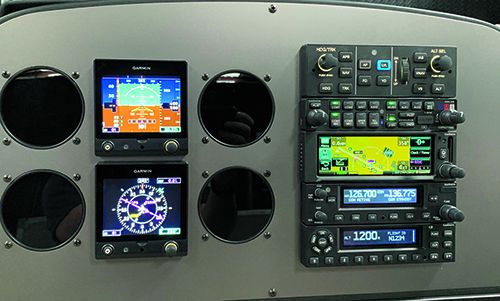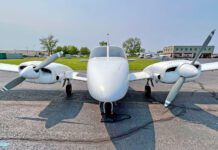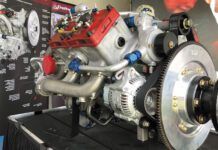WHICH GPS NAVIGATOR?
Your IFR GPS roundup article in the September 2019 Aviation Consumer proved incredibly resourceful as I shopped for a system to go in my Mooney. I agree with your assessment that for many of us it’s worth the savings to go without ground-based VHF nav capability, including ILS. I ended up with Garmin’s GTX 375 and dual G5 displays.
For others wrestling with the decision, my conclusion was pretty easy. I looked at the airports I typically frequent, including my field in North Carolina, and found that every single one of them was served by a precision GPS approach, some of them with lower minimums than my own personal ones.
When my shop put a price on both the VHF-equipped Garmin GTN 650 (the larger GTN 750 wouldn’t easily fit in my stack, the shop said) and the GPS-only GNX 375 the savings was over $2000. The unit also solved my ADS-B equipage dilemma with its built-in ADS-B transponder, which replaced a failing Narco AT150. I kept the existing King KX155 since the Garmin doesn’t have a VHF comm radio—a major shortcoming, I think.
Cole Matherson – Raleigh, North Carolina
Garmin offers a version of this navigator with a VHF comm radio, the GNC 355. It’s $6995 compared to $7995 for the GNX 375. However, the tradeoff is the version with the comm doesn’t have a built-in ADS-B transponder.
NEW CIRRUS TRAINER
As an owner of a Beech Musketeer with a fake landing gear switch, I was interested in your article on the new Cirrus TRAK SR20 trainer, which has a landing gear simulator. Question is, does this landing gear simulator system make the TRAK fair game for logging complex airplane experience for earning the commercial certificate?
Peter Hasset – via email
No. The landing gear simulator in the SR20 trainer is for procedural training only. But it doesn’t matter. Previously an applicant had to train 10 hours in a complex airplane—an airplane with a retractable landing gear, controllable-pitch propeller and flaps.
But the FAA now allows the training to take place in a technically advanced airplane, or TAA. That’s defined as an airplane with an electronic primary flight display that has all six primary flight instruments, an electronic multifunction display with a GPS-based map display and a two-axis autopilot with heading and navigation modes. With its integrated avionics, the SR20 TRAK checks all of those boxes.
CANADIAN ADS-B BEEF
When you read Nav Canada’s literature on the proposed ADS-B tech (which would require top and bottom L-band antennas) you have to wonder why they require a bottom mount antenna at all in new world of Aireon. There is no mention of a terrestrial network at all, so why complicate the solution?
Of course the answer is that they currently do have a network of radars, both SSR (secondary) and PSR (primary), covering the important parts of the country. Are there plans to turn off these services? Well, they are about to start. The PSR segments of three radars are currently on the chopping block. Here in Canada we are told that a PSR isn’t needed, even at recovery airports in this new world. The weather detection of these radars isn’t needed either, as the function was already turned off. But the worst part is the surviving secondary radars were designed in the 1980s and are worse than obsolete.
The question for all of us is why is Nav Canada insisting on a single solution for a critical surveillance system that is incompatible with general aviation? As stakeholders in Nav Canada we ask, “Why did you spend $150 million without asking us?” Why not update the radars and add ADS-B/FIS-B for useful real-world capability? Please unlock the safety features of ADS-B in Canada without burdening us with cost and complexity. Aireon is not a solution for safety, it is a way to bill and track us.
Lee Coulman – via email





